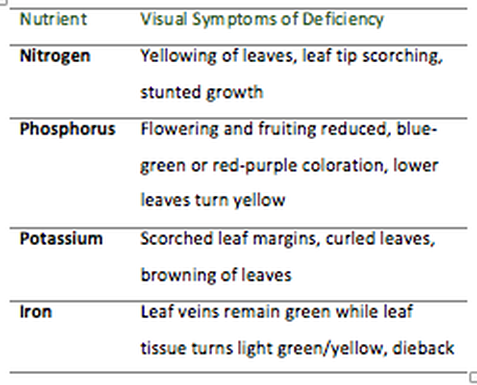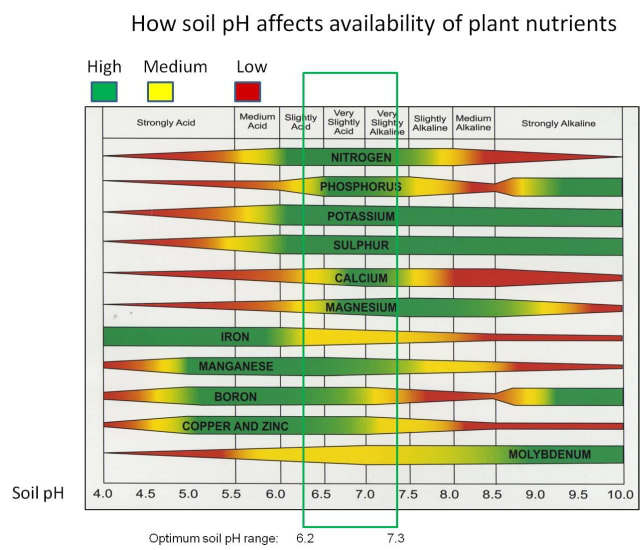You just planted a beautiful maple tree in your backyard and of course you want the tree to live a long, healthy life. So, you go out and buy some fertilizer to ‘feed’ the tree just like you would the flower bed in your front yard. Fertilizing seems pretty logical at first thought but further investigation into the biology of trees may lead you to a different answer.
The myth that fertilizer is tree food probably roots from the popular non-woody garden. Trees are long lived systems so many people live in houses that already have a big tree in the yard long before they arrived (1). From my own observation, the average person may plant only a few trees in their life but they will plant and care for a vegetable or flower garden each summer (2). So, when the time comes to plant a tree in their yard, they apply their knowledge of garden care to tree care not knowing how different the plants are (3, 4). In addition, companies produce tree fertilizer that is sold right next to the trees (2). Many people don’t look into it and just buy it and assume it is reliable because it is on the shelf.
To explore this myth, I will first discuss an analogy that will help you understand what tree food is. Then, I will describe symptoms of some deficiencies you should watch out for and make recommendations on when to apply fertilizer. I will end explaining the difference between the tree in your backyard and a tree in an orchard that is monitored and maintained for production.
The myth that fertilizer is tree food probably roots from the popular non-woody garden. Trees are long lived systems so many people live in houses that already have a big tree in the yard long before they arrived (1). From my own observation, the average person may plant only a few trees in their life but they will plant and care for a vegetable or flower garden each summer (2). So, when the time comes to plant a tree in their yard, they apply their knowledge of garden care to tree care not knowing how different the plants are (3, 4). In addition, companies produce tree fertilizer that is sold right next to the trees (2). Many people don’t look into it and just buy it and assume it is reliable because it is on the shelf.
To explore this myth, I will first discuss an analogy that will help you understand what tree food is. Then, I will describe symptoms of some deficiencies you should watch out for and make recommendations on when to apply fertilizer. I will end explaining the difference between the tree in your backyard and a tree in an orchard that is monitored and maintained for production.
What is Tree Food?
If you break a tree down into its constituent parts after removing all of the water, you will find the following: 48-50% carbon, 38-42% oxygen, 6-7% hydrogen, and less than 1% of elements such as nitrogen, potassium, sulfur, and a few others (3). The oxygen, hydrogen, and carbon that are needed in large amounts and the tree gets them from the water taken up by the roots and carbon dioxide gas it intakes while photosynthesizing (4) (5). You can think of the carbon, oxygen, and hydrogen as tree food because they are needed in large amounts and all the time—just as you eat food every day in relatively large amounts. On the other hand, the essential elements that make up less than 1% of the trees composition are derived mostly from the soil and in much smaller amounts than the tree food discussed above (4). You can think of these essential elements as vitamins—they only need to be taken when there is a deficiency or to obtain a specific characteristic. Use this analogy to help you care for your tree.
Symptoms of Deficiencies
Now that you are thinking of fertilizer as a vitamin instead of tree food, you may be wondering how to know when your tree is nutrient deficient. Below, in Table 1, are descriptions of visual symptoms that accompany specific nutrient deficiencies in trees.
It is important to note that just because your tree is showing visual indications that it is deficient, does not mean there is a lack of nutrients in the soil—those nutrients could just not be available to be taken up. As you can see in Figure 2, if the pH of the soil surrounding the tree is above or below 6.2-7.3 the nutrients become unavailable (5) (7) (10). It is recommended that you consult a local tree professional to help you decide whether or not your tree needs fertilizer and what kind. They can perform soil tests to look at the pH as well as the nutrient composition of the soil and give you recommendations based on the results. Most fertilizers have a NPK label (see figure 3) on them that tells you the amount of nitrogen, phosphorus, and potassium that it contains. The tree professional will recommend a fertilizer with a NPK ratio that best fits your soil’s needs.
Urban Trees vs. Production Trees
|
As you learned above, in an urban setting fertilizer is only necessary if your tree is deficient. You can think of urban trees as an average person who just wants to be healthy enough to survive. In production settings, trees are highly monitored and the perfect amount of fertilizer is applied to maximize production. You can think of trees used for production as the bodybuilders. Orchards, lumber plantations, nurseries, and Christmas tree farms are all examples of production settings where fertilizer is used to maximize production.
In studies of Hakuho peaches and in apple orchards fertilizer was found to increase fruit production (12) (13). Fertilizer was also found to increase wood production in scots pine (Pinus sylvestris) (14). Fertilizer was found to increase leaf production in Brazilian Coville trees that are grown in stands and the leaves are harvested because they contain medical tannins that are used as antioxidants in rural populations of Brazil (15). |
|
Summary
The main take home from the exploration of this myth, that fertilizer is NOT tree food, and you should think of it more as a vitamin. In urban settings, where a tree is valued just for being healthy, fertilizer is only needed when a tree has symptoms of nutrient deficiency and soil pH can be ruled out. In production settings that are heavily monitored, fertilizer is great for maximizing the production of products we benefit from every day like paper and fruit (12) (13) (14) (15). So, let that maple tree in your yard do its own thing; let it feed from the air it intakes from the atmosphere and the water from the soil. But, keep an eye out for visual signs of deficiencies so you can help it out when it needs a little fertilizer.
Bibliography
1. Street trees and rural conspecifics: Will long-lived trees reach full size in urban conditions? Quigley, Martin. 1, March 2004, Urban Ecosystems, Vol. 7, pp. 29-39.
2. Miracle-Gro. Miracle-Gro Fertilizer. miricalegro.com. [Online] [Cited: October 31, 2018.] https://www.miraclegro.com/en-us/products/plant-food-care/miracle-gro-fruit-citrus-tree-fertilizer-spikes?cmp=kid/Gardens/Google_SEM/NonBrand/G_Gardens_NonBrand_Do_PlantFood/G_Gardens_NonBrand_Do_PlantFood_Tree&Shrub&s_kwcid=AL!4676!3!193848781192!b!!g!!%2Btree%20%2Bfertilizers&ef_id=Cj0KCQjwjvXeBRDDARIsAC38TP4ZaDtgPJ-z_Hn6fy5umt9Kx-aoHpLINXEfWHvUMpNEKFty9wuVaaIaAu8XEALw_wcB:G:s&s_kwcid=AL!4676!3!193848781192!b!!g!!%2Btree%20%2Bfertilizers.
3. Howe, Jeff. What Percentage of the Mass of a Tree is Water? s.l., Illinois : Dovetail Partners, Inc.
4. Coder, Kim. Essential Elements of Tree Health. warnell.edu.edu. [Online] June 2013. https://www.warnell.uga.edu/sites/default/files/publications/1.%20Essential%20Elements%20of%20Tree%20Health%20Part_I%20%20Pp.1-62.pdf.
5. Pallardy, Stephen G. Physiology of Woody Plants. s.l. : Academic Press, 2011.
6. Clatterbuck, Wayne. Nutrient Deficiencies in Trees. University of Tennessee. s.l. : USDA Forest Service.
7. A root bioassay test for nitrogen deficiency in forest trees. Jones, Helen, Quarmby, C. and Harrison, A. 3, 1991, Forest Ecology and Management, Vol. 42, pp. 267-282.
8. Nutrient Deficiencies. Missouri Botanical Garden. [Online] [Cited: November 27, 2018.] http://www.missouribotanicalgarden.org/gardens-gardening/your-garden/help-for-the-home-gardener/advice-tips-resources/pests-and-problems/environmental/nutrients.aspx.
9. Treating Iron Chlorosis in Trees. JenREESources Extension Blog. [Online] https://jenreesources.com/2015/06/14/treating-iron-chlorosis-in-trees/.
10. AgroBest Nutritional Systems. www.agrobest.com. [Online] June 19, 2017. [Cited: November 26, 2018.] http://www.agrobest.com.au/news/How-Soil-pH-affects-availability-of-plant-nutrients-7.htm.
11. Plant Food & Fertilizer. Home Depot. [Online] https://www.homedepot.com/p/Pennington-40-lb-All-Purpose-Nitrogen-Fertilizer-451378/204279955.
12. Effects of fertilizer on tree growth and fruit quality of 'Hakuho' peaches (Prunus persica). Huijian Jia, Ken Hirano, Goro Okamoto. 3, 1999, Japanese Society of Horticultural Sciences, Vol. 68, pp. 487-493.
13. Effect of orchard fertilizer applications on the composition of apples. J. St. John, E. Overholser, F. Overley. American Society of Plant Biologists, pp. 435-445.
14. Changes in carbon allocation patterns in spruce and pine trees following irrigation and fertilization. E. Axelsson, B. Axelsson. 1986, Tree Physiology, Vol. 2, pp. 189-204.
15. Trade-offs between growth, reproduction and defense in response to resource availability manipulations. Juliana Tuller, Robert Marquis, Samara Andrade, Angelo Monteiro, Lucas Faria. 8, 2018, PLoS ONE, Vol. 13.
16. Colorado Palisade. visitpaslisade.com. [Online] https://visitpalisade.com/orchards-and-farms/).
17. Halkett, John. Talking Trees. www.talkingtrees.com. [Online] http://www.talkingtrees.com.au/radiata-pine-super-wood-of-the-21st-century/.
18. Elling Tree Farm. [Online] http://www.ellingtreefarm.com/.
19. Bailey Nurseries. [Online] http://www.baileynurseries.com/.
2. Miracle-Gro. Miracle-Gro Fertilizer. miricalegro.com. [Online] [Cited: October 31, 2018.] https://www.miraclegro.com/en-us/products/plant-food-care/miracle-gro-fruit-citrus-tree-fertilizer-spikes?cmp=kid/Gardens/Google_SEM/NonBrand/G_Gardens_NonBrand_Do_PlantFood/G_Gardens_NonBrand_Do_PlantFood_Tree&Shrub&s_kwcid=AL!4676!3!193848781192!b!!g!!%2Btree%20%2Bfertilizers&ef_id=Cj0KCQjwjvXeBRDDARIsAC38TP4ZaDtgPJ-z_Hn6fy5umt9Kx-aoHpLINXEfWHvUMpNEKFty9wuVaaIaAu8XEALw_wcB:G:s&s_kwcid=AL!4676!3!193848781192!b!!g!!%2Btree%20%2Bfertilizers.
3. Howe, Jeff. What Percentage of the Mass of a Tree is Water? s.l., Illinois : Dovetail Partners, Inc.
4. Coder, Kim. Essential Elements of Tree Health. warnell.edu.edu. [Online] June 2013. https://www.warnell.uga.edu/sites/default/files/publications/1.%20Essential%20Elements%20of%20Tree%20Health%20Part_I%20%20Pp.1-62.pdf.
5. Pallardy, Stephen G. Physiology of Woody Plants. s.l. : Academic Press, 2011.
6. Clatterbuck, Wayne. Nutrient Deficiencies in Trees. University of Tennessee. s.l. : USDA Forest Service.
7. A root bioassay test for nitrogen deficiency in forest trees. Jones, Helen, Quarmby, C. and Harrison, A. 3, 1991, Forest Ecology and Management, Vol. 42, pp. 267-282.
8. Nutrient Deficiencies. Missouri Botanical Garden. [Online] [Cited: November 27, 2018.] http://www.missouribotanicalgarden.org/gardens-gardening/your-garden/help-for-the-home-gardener/advice-tips-resources/pests-and-problems/environmental/nutrients.aspx.
9. Treating Iron Chlorosis in Trees. JenREESources Extension Blog. [Online] https://jenreesources.com/2015/06/14/treating-iron-chlorosis-in-trees/.
10. AgroBest Nutritional Systems. www.agrobest.com. [Online] June 19, 2017. [Cited: November 26, 2018.] http://www.agrobest.com.au/news/How-Soil-pH-affects-availability-of-plant-nutrients-7.htm.
11. Plant Food & Fertilizer. Home Depot. [Online] https://www.homedepot.com/p/Pennington-40-lb-All-Purpose-Nitrogen-Fertilizer-451378/204279955.
12. Effects of fertilizer on tree growth and fruit quality of 'Hakuho' peaches (Prunus persica). Huijian Jia, Ken Hirano, Goro Okamoto. 3, 1999, Japanese Society of Horticultural Sciences, Vol. 68, pp. 487-493.
13. Effect of orchard fertilizer applications on the composition of apples. J. St. John, E. Overholser, F. Overley. American Society of Plant Biologists, pp. 435-445.
14. Changes in carbon allocation patterns in spruce and pine trees following irrigation and fertilization. E. Axelsson, B. Axelsson. 1986, Tree Physiology, Vol. 2, pp. 189-204.
15. Trade-offs between growth, reproduction and defense in response to resource availability manipulations. Juliana Tuller, Robert Marquis, Samara Andrade, Angelo Monteiro, Lucas Faria. 8, 2018, PLoS ONE, Vol. 13.
16. Colorado Palisade. visitpaslisade.com. [Online] https://visitpalisade.com/orchards-and-farms/).
17. Halkett, John. Talking Trees. www.talkingtrees.com. [Online] http://www.talkingtrees.com.au/radiata-pine-super-wood-of-the-21st-century/.
18. Elling Tree Farm. [Online] http://www.ellingtreefarm.com/.
19. Bailey Nurseries. [Online] http://www.baileynurseries.com/.



